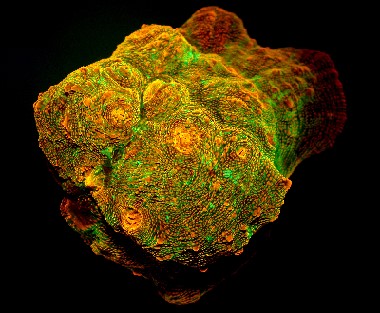River subbasins more depleted than
official figures show
09 April 2024
Published online 20 July 2017
Biologists uncover how fluorescent corals survive at low-light depths.

© E. Smith
This adaptation is how corals thrive at great depths, according to a new study by a team of international scientists including a first author from New York University Abu Dhabi, United Arab Emirates.
The scientists explain how the function of the glowing proteins changes in corals, depending on where they live. The corals in poorly lit environments use a special type of red fluorescent protein that captures blue light and re-emits it as orange-red1. This orange-red light penetrates deeper into the coral’s tissue, helping the algae photosynthesize2.
“Our study supports the notion that symbiotic corals living at greater depths have evolved sophisticated adaptations to the challenges imposed by the special light environment,” says primary investigator Jörg Wiedenmann, senior lecturer of biological oceanography at the University of Southampton.
Corals and algae are locked in a symbiotic relationship. Corals provide the algae with shelter, carbon dioxide and nutrients and in return, the algae supplies 90% of the corals’ energy needs.
The researchers simulated a dim environment in an artificial coral aquarium and revealed that the red fluorescent corals have a better chance of long-term survival compared to their non-pigmented counterparts.
The findings matched the distribution of corals in the Red Sea; the corals carrying special red fluorescent pigments are more abundant at greater depths.
This research is greatly significant as it uncovers the mechanisms by which corals can live in these deep-water environments, says marine biologist Christian Voolstra, who studies Red Sea corals at the King Abdullah University of Science and Technology (KAUST), Saudi Arabia and who was not involved in the research. “One of the hopes is that these deeper coral reefs can serve as refugia for corals that are threatened by the consequences of environmental change at lower depths.”
However, "we need to assess whether all corals have the specific fluorescent proteins to thrive at low-light depths," Voolstra adds.
These findings could go well beyond conservation too. Glowing corals in deeper water may be a potential source for marker proteins for medical research applications such as advanced microscopic imaging, says Wiedenmann.
doi:10.1038/nmiddleeast.2017.117
Stay connected: